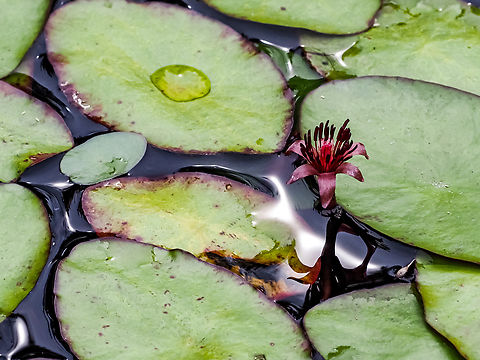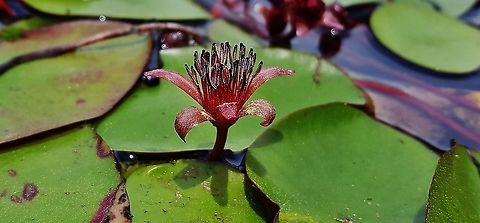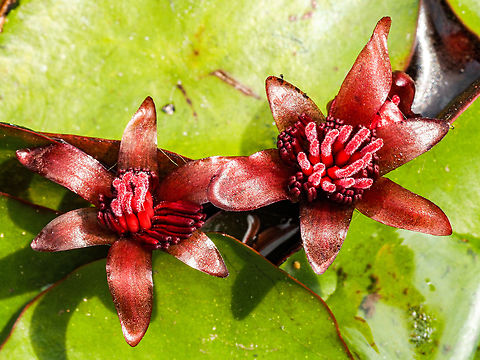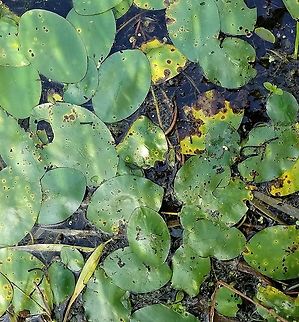
Appearance
"Brasenia" is a perennial aquatic plant with floating, peltate leaves and rhizomatous stems. It is identified by its bright green leaves, small purple flowers that bloom from June through September, and a thick mucilage that covers all of the underwater organs, including the underside of the leaves, stems, and developing buds. This mucilage may be an anti-herbivore defence trait, perhaps to deter snail grazing. It grows in shallow water of lakes, rivers and beaver ponds, particularly those with somewhat acidic water."Brasenia" exhibits wind pollination. The flowers have a two-day blooming period. On the first day, the functionally female, or pistillate flower, extends above the surface of the water and exposes the receptive stigmas. The flower then recedes below the water surface and on the following day emerges as a functionally male, or staminate flower. It is elevated higher than on the previous day and the anther-bearing filaments are extended beyond the female carpels. The anthers dehisce, releasing the pollen, and the flower is then withdrawn below the water where the fruit develops.

Naming
"Brasenia schreberi" has the common name water-shield.The genus may commemorate the surgeon and Moravian missionary Christoph Brasen, who was the first superintendent of the Moravian mission at Nain in Labrador.

Predators
Twelve different species of insects have been identif ied as feeding on B. schreberi (Harms and Grodowitz 2009). These insects are representative of four families in three different orders: Chrysomelidae and Curculionidae (both Coleoptera), Chrionomidae (Diptera), and Pyralidae (Lepidoptera). Species in these families feed on a wide variety of aquatic macrophytes, and several members of Chrysomelidae, particularly Donacia spp., target macrophytes with float- ing leaves. These herbivores all have varied life histories and feeding habits that result in distinctly different feeding damage by each on host plants.
Evolution
Species of "Brasenia" occurred during the interglacial of Europe, but like many other aquatic plant species and genera, it does not occur there now.
Uses
"Brasenia" is cultivated as a vegetable in China and where it is used in Hangzhou in the well-known local speciality "West Lake Water Shield Soup and in Japan.The mucilage it produces has been found to have anti-algal and anti-bacterial properties that may be useful as a natural weed control.
References:
Some text fragments are auto parsed from Wikipedia.
https://quod.lib.umich.edu/m/mbot/0497763.0056.106/--note-on-mucilage-and-herbivore-damage-on-brasenia-schreberi?rgn=main;view=fulltext